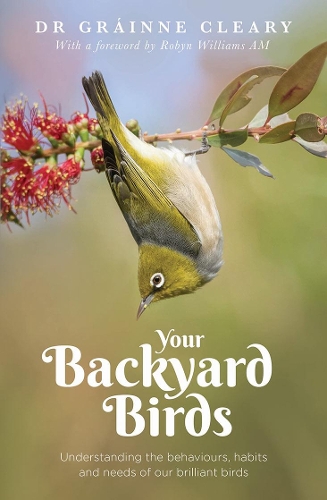
Your Backyard Birds: Understanding the behaviours, habits and needs of our brilliant birds
(Paperback)
Publishing Details
Your Backyard Birds: Understanding the behaviours, habits and needs of our brilliant birds
By (Author) Grainne Cleary
Allen & Unwin
Allen & Unwin
4th March 2019
Australia
Classifications
General
Non Fiction
598.0723494
Physical Properties
Paperback
272
Width 153mm, Height 234mm
340g
Description
A beautiful, inspiring and heartwarming book about our human relationships with the birds who share our backyards.
'Do you ever wonder what birds are talking about as they fly by you The sounds and songs of birds constantly surround us as we go about our lives. But what are they talking about Or are they even talking or just mindlessly squawking and chirping Why are so many urban birds so loud Is there a message in what the birds are telling each other'
Observing and interacting with all the different birds who visit Australian backyards leads naturally to questions about their behaviours, habits and needs. Why are they visiting What do they want from us
For a bird, life in Australia means having mates: others who you can trust and work with to locate food and water, which can disappear as suddenly as it appears. As the humans who plant the gardens they live in and visit, what can we learn from Australia's often-cheeky birds
With a foreword by science journalist and broadcaster Robyn Williams AM, and chapters dedicated to discovering extraordinary information about Australia's innovative birds, Your Backyard Birds is a delightful and compelling read. With real stories from bird-loving citizen scientists, this fascinating book features new insights about the lives of our avian friends.
Your Backyard Birds, written by a wildlife ecologist who is passionate about the vital role of citizen scientists, provides a fresh and lively perspective on human interaction with birds.
Author Bio
Dr Grainne Cleary is a wildlife ecologist based in Melbourne. Her primary area of interest is working with the public through citizen science to gain the best outcomes for urban wildlife, particularly in how Australians interact with birds in their backyards. She believes our behaviour can have a huge influence on urban wildlife and how native animals can use our gardens as a sanctuary in otherwise inhospitable environments.
